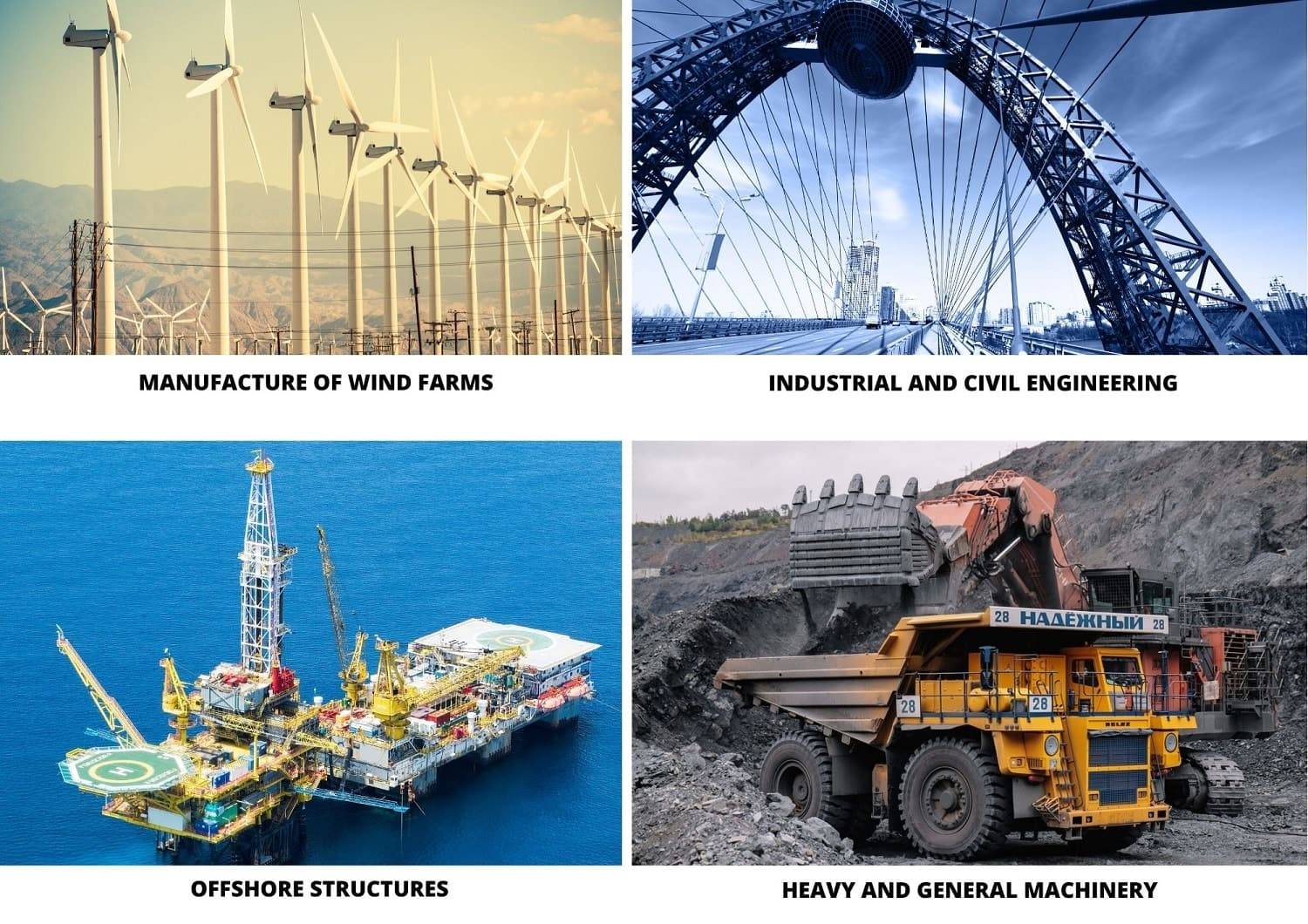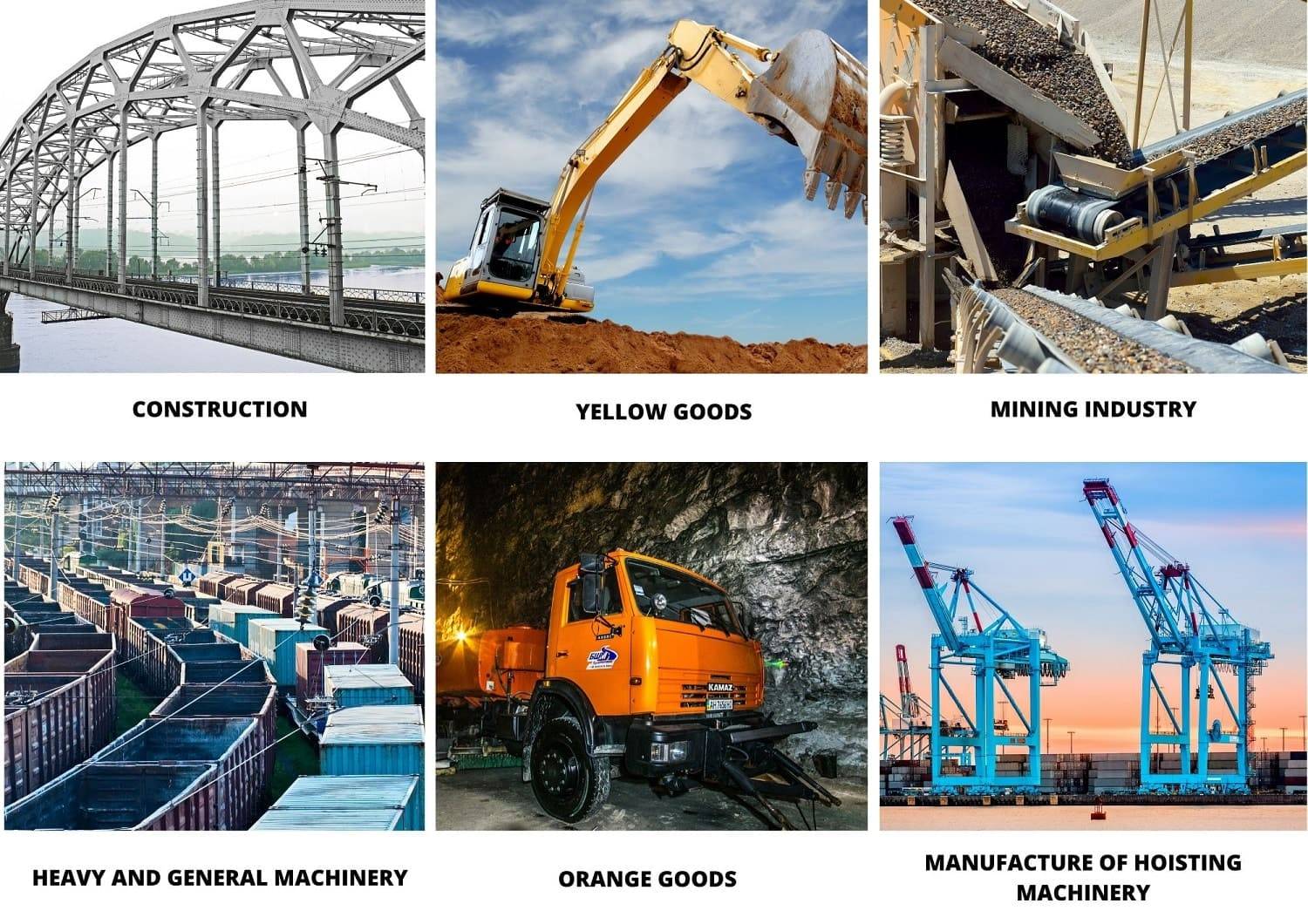Use of extra-high and high-strength rolled products allows decreasing the specific quantity of metal as against commercial steels by one third: steel thickness is less and load-bearing capacity of a structure remains unchanged. In other words, strong steels mean reduced costs and simplified manufacture of an end product.
In addition, growing environmental requirements encourage manufacturers to switch to energy-saving processes and reduce the consumption of resources and process emissions. And here steel structure weight reduction is really needed. What is the best way to decrease the item’s weight? Right, high-strength steels and alloys should be used.
Classification of low- and high-strength steels differs in different standards. In practice, a product is considered to be strong if its yield strength* is above 355 MPa. For example, rolled products of S355 grade can be considered the conditional boundary between mild and strong steels. The manufacture of such rolled products is governed by the European standard EN10025; the American classification uses individual standards for high-strength rolled products.
Metinvest Group manufactures extra-high and high-strength rolled products of more than 100 steel grades. One third of the Group’s sales is high-strength sheets and coils.
High-strength rolled products manufacturing techniques
The most demanding techniques of high-strength flats manufacture is a thermomechanical controlled process and quenching and tempering.
A thermomechanical controlled process (ТМСР) is a rolling process during which the final fine structure of a metal is achieved by micro-alloying, rolling at a temperature of 700–900 °С, and strictly controlled cooling.
TMCP differs from other methods by the absence of additional thermal treatments outside a rolling mill and minimum use of alloying elements. In contrast to conventional rolling techniques, the TMCP process allows receiving a unique microstructure, which ensures high strength and good moulding capacity.
Thermomechanically strengthened steel rolled products have a low-carbon equivalent, which ensures good weldability and therefore reduces the cost of end-product manufacture. High strength, weldability and cracking resistance allow using TMCP products in structures with an operating temperature up to minus 50 °C.
Thermomechanically strengthened steel is manufactured in accordance with the European standards EN 10025-4 (DSTU EN 10025-4), EN 10149-2 and other international regulatory documents, as well as under manufacturers’ own brands t(DOMEX, PERFORM, ALFORM, DICUT, DI-MC, etc.). Metinvest manufactures thermomechanically strengthened steel at Azovstal Iron & Steel Works (thick sheets) and Ilyich Iron and Steel Works (plates and coils), as well as at Ferriera Valsider, an Italian rolling works (coils).
Scopes of thermomechanically strengthened rolled products

Quenching and tempering (Q&T) is a kind of thermal processing of steel aimed at increasing the steel’s strength.
Quenching includes heating to a set temperature, equalising and further fast cooling in water, oil, salts or other liquids. There are two types of quenching: after rolling in a rolling mill or reheating in a separate thermal area. To relieve post-quenching internal stresses, rolled products are mostly tempered* at an adjusted temperature depending on the required properties (from 180 °С to 650 °С).
The advantages of high-strength quenched rolled products:
- increasing the endurance of rolled products;
- decreasing the weight of items, structures, with the maintenance of strength properties;
- increasing the payload capacity;
- decreasing costs for transportation, assembly, and installation;
- decreasing costs for repair and maintenance;
- combining endurance, cracking resistance and deformation resistance.
Rolled products are quenched and tempered in accordance with EN 10025-6, ASTMA514, ASTMA517, GOST 19281, as well as under manufacturers’ own brands of manufacturers (MIILUX, HARDOX, WELDOX, XAR, SECURE, DILLIDUR, DILLIMAX, ALDUR, etc.).
Metinvest manufactures tempered plates at Azovstal Iron & Steel Works.
In addition, quenching and tempering can be performed at steel structure works and machine-building and repair enterprises. In this case, hot-rolled pre-treated flats, coils or sections undergo strengthening thermal treatment to achieve the required properties of an item. To do this, carbon and alloyed steel manufactured in accordance with the international standards ISO 683-1/EN 10083-2, ISO 683-2/EN 10083-3, DSTU EN 10083-2, DSTU EN 10083-3, DSTU 8429/ GOST 14959, and GOST 1577 is used as a semi-finished product. Such products are also available at the Ukrainian and foreign plants of Metinvest.
Scopes of quenched rolled products

*Yield strength is a point of metal conversion from an elastic state to a plastic one. It is measured in pascal units. The more the yield strength, the stronger the metal. To determine the yield strength of metal, it is stretched in opposite directions.
*Tempering is a process in which a part is reheated to a specific temperature (significantly less than the quenching temperature) and then air-cooled or cooled slowly in a kiln.
